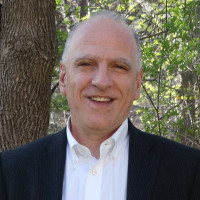 I am pleased to announce that Professor Matthew Neurock of the University of Minnesota is the recipient of the2015 Robert Burwell Lectureship in Catalysis of the North American Catalysis Society, sponsored by Johnson Matthey and administered by The North American Catalysis Society. It is awarded biennially in odd-numbered years. The award consists of a plaque and an honorarium of $5,000. The plaque will be presented during the closing banquet ceremonies at the 2015 North American Meeting of the Catalysis Society. An additional $4,500 is available to cover travelling expenses in North America.
I am pleased to announce that Professor Matthew Neurock of the University of Minnesota is the recipient of the2015 Robert Burwell Lectureship in Catalysis of the North American Catalysis Society, sponsored by Johnson Matthey and administered by The North American Catalysis Society. It is awarded biennially in odd-numbered years. The award consists of a plaque and an honorarium of $5,000. The plaque will be presented during the closing banquet ceremonies at the 2015 North American Meeting of the Catalysis Society. An additional $4,500 is available to cover travelling expenses in North America.
Professor Neurock will present lectures at the local catalysis clubs and societies during the two-year period covered by this award.
The Robert Burwell Lectureship in Catalysis is given in recognition of substantial contributions to one or more areas in the field of catalysis with emphasis on discovery and understanding of catalytic phenomena, catalytic reaction mechanisms and identification and description of catalytic sites and species.
Professor Matthew Neurock is being recognized for his seminal contributions to the development and application of theoretical and computational methods to elucidate catalytic mechanisms and the active sites involved. He has pioneered first-principle kinetic Monte Carlo methods that explicitly track molecular transformations on realistic surfaces at relevant conditions, ab initio molecular dynamics methods that describe complex metal-solution interfaces, and ab initio constant potential methods for electrochemical systems to understand and aid the design of catalytic and electrocatalytic systems.
His group has used these methods, together with ab initio quantum chemical treatments, to explore metals, alloys, oxides, sulfides and zeolites and the mechanisms by which they mediate catalysis. These treatments have uncovered previously unrecognized routes that prevail at the high surface coverages relevant to catalytic practice, the direct participation of protic media as a co-catalyst, and the role of acid-base sites formed by hydroxyl intermediates on metals. His effective collaborations with experimental groups have led to fundamental and practical insights into the mechanisms of alkane activation, Fischer-Tropsch synthesis, selective oxidation and hydrogenation of alkenes and oxygenates, hydrocarbon and oxygenate hydrogenolysis reactions, acid-catalyzed transformations, and electrocatalytic reduction-oxidation cycles.
Enrique Iglesia
President
North American Catalysis Society
Bruce Cook
Vice President
North American Catalysis Society